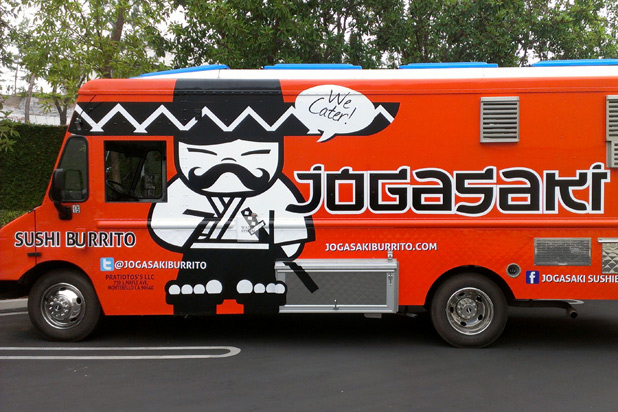Growing up, my mother, who worked at a Quincenera shop in the historic fashion district, always took me and my brother with her to work. I remember the streets of Pico and Maple lined with taco trucks, or loncheras, during lunch hours. People used to call them “roach coaches.”
Now, you often see food trucks lined up in front of corporate buildings during lunch hour to serve white collar workers. Now they’re referred to as “gourmet food trucks,” serving up trendy fusion cuisine for a fraction of the price.
How did this crazy make-over happen?
The recession following the 2008 financial crisis created an increased demand for quick quality food on a budget. Trailblazers like Chef Roy Choi revolutionized the industry when he introduced the iconic Korean-Mexican tacos. Kogi was founded in 2008, right at the beginning of the recession and right after Choi was fired from his cushy job at Rocksugar. The business struggled at first, but by 2009, Kogi had 36,000 Twitter followers and generated 2 million dollars mostly off of $2 tacos. People were waiting in 2 hour lines to get a taste.
Aside from the food being delicious, the key secret to the rise of Kogi was social media. The only way people could track down Kogi was through Twitter, and with Choi’s zero marketing budget, social media became a powerful weapon to spread the word. Today, there are thousands of “gourmet” food trucks that run Los Angeles. These new emerging food trucks are serving the demand of the new privileged poor consumer.
However, some people believe the food truck craze is getting out of hand, turning into a mini-bubble in its own right. Hiller says the scene has become too saturated with inexperienced band-wagoners without culinary backgrounds. In addition, the increased regulations and higher prices are creating new barriers to entry. High demand for food trucks has driven the leasing prices way up since “everyone is doing it.”
Food truck culture is spreading across the US to cities like New York and Washington D.C. It will be interesting to see whether food trucks are just a fad or the real deal. Want to learn more? Here is a cool infographic that sums it all up.





Leave a Reply
You must be logged in to post a comment.